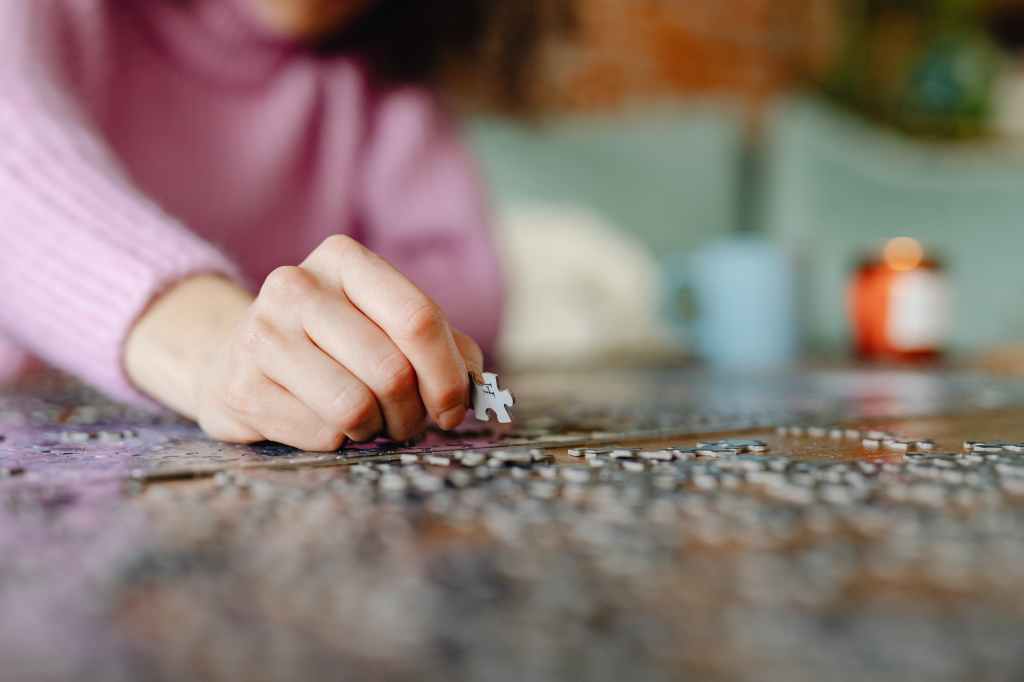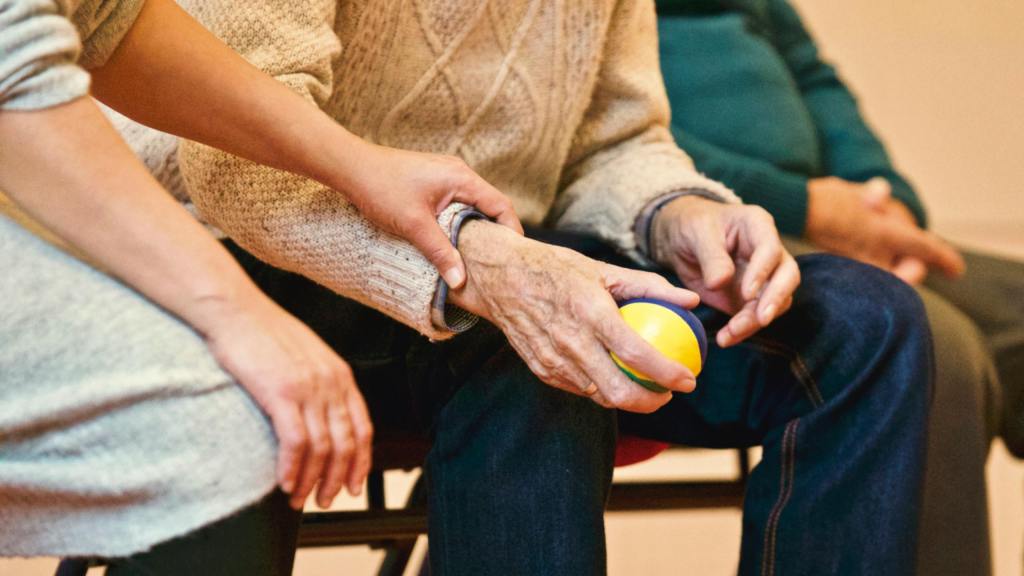
Activities for People with Dementia: 30 Expert Tips for Daily Activities and Routines
For those with dementia or Alzheimer’s disease, staying active and engaged is beneficial for both a person’s physical and cognitive health. Exercise, outdoor activities, games, music, and art are just a few of the activities proven to be helpful for those with dementia or other cognitive disorders.
“All too often, we as caregivers struggle to manage the emotional and behavioral toll dementia can take on the person for whom we care. People with dementia often struggle with depression, isolation, lethargy, and loneliness. This can lead to challenging behaviors like wandering, withdrawal, and agitation,” says Saran Craig, Senior Clinical Implementation Specialist at Careforth. “In my 25 years working with people with dementia, I have found that engaging in simple activities with the person with dementia is one of the best therapies and one of the greatest tools for dementia caregivers!”
When choosing which activities to include in your caregiving routine, keep in mind that everyone enjoys different activities, so it’s important to find the activities best suited for the personality and lifestyle of the person receiving care. It’s critical to also understand the impact activity and engagement can have on quality of life and overall well-being of a person living with dementia.
Why Daily Activities and Routines are Important for People with Dementia
A daily routine with healthy activities is important for all older adults and especially vital for those with dementia or other cognitive disabilities. As dementia progresses, the person will find it more difficult to focus and will struggle with learning new things.
Routine provides a sense of control over the day and environment, especially for those in the early stages of the disease. For those in the end stage of dementia, many of these activities are often one of the few ways they can still engage their memories and communicate.
Additional benefits of incorporating engaging activities in one’s daily routine include:
- Stimulating Cognitive Function. Staying active helps keep the mind engaged and ready for new experiences and can be used to maintain social bonds which can aid in memory recall and improve wellbeing.
- Providing a Source of Focus. Friends and family can provide structure by planning activities and spending quality time together. This added stability in a daily routine is an effective way to reduce stress and give a person with dementia a source of focus.
- Building a Feeling of Productivity. Many of those with dementia feel like they place a burden on their friends and family. Daily activities – big or small – can provide both a feeling of productivity and accomplishment.
Advice from Careforth Care Team: Be sure to avoid activities that may be too challenging or frustrating for your loved one. It’s very important to create a positive environment before incorporating new activities into one’s daily routine.
Activities for People with Dementia at Home: 30 Expert Tips
To help keep someone with dementia active and engaged in meaningful activities, there are a few tips from Careforth’s expert care teams that can help improve the quality of life of the person with dementia, as well as the caregiver.
From changes to one’s daily routine, music and art projects, brain games, and exercise and outdoor activities – there are many ways to make positive life changes through all stages of dementia. Consider the following activities to get you started on your path to improved care and wellbeing.
Day-to-Day Routine Improvements
One of the easiest ways to add activity to a person’s life, is by incorporating new tasks and activities into your daily routine. To get you started on making positive changes to one’s day-to-day routine, consider these 10 opportunities for activity:
- Visit somewhere familiar and pleasant.
- Create daily activities to mimic their former work life.
- Eat and sleep at the same times each day.
- Don’t be afraid to talk about the past. Consider this: Reminiscing can reduce symptoms of depression, improve communication, boost self-esteem, and reconnect someone with their family history and memories.
- Spend time sorting and organizing.
- Get a fish tank or aquarium. Consider this: Introducing a large fish tank in a person’s dining area can increase appetite and weight gain in residents with dementia.
- Try pet therapy or adopt a furry friend.
- Cook or bake together.
- Indulge in aromatherapy.
- Use community resources.
Music and Art Projects
Arts and crafts, as well as music, can be incredibly powerful for those with cognitive disabilities and can be an excellent way to connect. Consider these 10 expert tips:
- Listen to music together, and don’t be afraid to sing along. Consider this: Music has been shown to help people with dementia feel calmer, improve their mood, create social connections, and slow the decline of cognitive function.
- Keep a journal tracking daily activities and exercising memory recall.
- Create a box filled with photos and memory-filled objects.
- Take dance breaks.
- Try knitting or crochet.
- Get crafty or pick up a paintbrush. Consider this: Using art as a form of therapy can reduce stress, anxiety, and depression, and can play a critical role in facilitating engagement and social connections for those with dementia and other cognitive illnesses.
- Take a stroll around a museum.
- Play with modeling clay to help with dexterity.
- Make your own musical instruments.
- Read a book together. Consider this: According to a 14-year study, reading activity can prevent long-term decline in cognitive function in seniors.
Brain Games for Dementia
As dementia progresses, many cognitive skills – like arithmetic, counting, memory recall, etc. – become difficult and distressing. Games and apps focused on strengthening and exercising these cognitive skills can be a great source of mental activity for someone with dementia. Examples of brain games and activities include:
- Play cards and board games.
- Solve daily crosswords and jigsaw puzzles.
- Use comedy and improvisation to bring laughter to your day and live in the moment. Consider this: According to Mayo Clinic, laughter can reduce stress, improve your immune system, relieve pain, and improve your mood and outlook.
- Play brain-training or word game apps.
- Play with dolls or toys.
Get Active and Exercise
For people with dementia, staying active and getting outside are vital to keeping a person engaged in everyday life. To accomplish this, try integrating daily or weekly activities outdoors, at local community centers, or in your own neighborhood. For inspiration, consider the following activities:
- Dig in the garden.
- Take a dip in the local pool.
- Go for a walk through the neighborhood.
- Try chair exercises fit for seniors with varying physical abilities.
- Unlock the power of mindfulness through yoga and massage therapy. Consider this: Physical touch – such as hand or foot massages – has been shown to calm agitated behaviors, reduce stress, and ease physical discomfort.
Taking Action to Improve Your Loved One’s Wellbeing – A Closing Invitation
“Often the old activities that brought the person we care for meaning, purpose and joy are not possible. A common cause of depression, withdrawal, or challenging behaviors in someone with dementia is lack of activity and purpose. To put it in the simplest terms – they’re bored!” says Craig. “If you’re experiencing emotional or behavioral challenges with the person you care for, you might find introducing activity is your solution! Introducing new, simple activities to a person with dementia will not only brings them joy and meaning, but it will also give you a simple tool to connect, improve quality of life, and enhance relationships.”
When it comes to providing care for someone with a chronic illness or disease, you don’t have a do it alone. Careforth provides you with an entire care team and support resources to help you in caring for yourself, so you can feel supported at every turn. Contact us today.
More insights like this:
-

Delirium vs. Dementia: Causes, Symptoms, Treatments, and Preventative Measures
Read more: Delirium vs. Dementia: Causes, Symptoms, Treatments, and Preventative MeasuresFeelings of confusion, difficulty focusing, and memory loss can have many causes and, especially in older adults, can be hard to tell apart from more typical signs of aging. Delirium is a disturbance in mental abilities, resulting in confused thinking and reduced awareness of one’s environment. Symptoms of delirium typically come on quickly,…
-

What Caregivers Should Know About Early-Onset Alzheimer’s
Read more: What Caregivers Should Know About Early-Onset Alzheimer’sSymptoms, Stigma, Diagnosis, and Treatment Early-onset Alzheimer’s disease, also known as younger-onset, is the development of Alzheimer’s symptoms between the ages of 30 and 65. A diagnosis is relatively rare at a younger age, and while over 6 million people in the United States are living with Alzheimer’s disease, the true prevalence of early-onset is uncertain.…
-

15 Tips on Transitioning a Loved One to Memory, Dementia, or Alzheimer’s Care
Read more: 15 Tips on Transitioning a Loved One to Memory, Dementia, or Alzheimer’s CareAs a part of your journey caring for someone with Alzheimer’s or another form of dementia, there may come a time when the effects of the disease become too much for a caregiver to handle, and one must seek alternative care options. When deciding the right time to transition your loved one to…